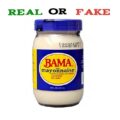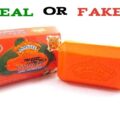
Automobiles can be anyone’s best friend if one can take care of it well. Owning an automobile means one has to take responsibility and use the best engine oil. The machine must be taken to the mechanic for check-ups so that it stays in good shape for long. Minor or major road accidents can damage the internal parts of the vehicle, so it must be taken to servicing center whenever any accident occurs.
Many car crashes arise due to negligence, but sometimes a crash is caused by a mechanical failure or malfunction. A mechanical malfunction can be the sole cause of your car accident, or it can be simply a contributing factor that transforms a minor accident into a catastrophic event.
Any combustion engine requires engine oil to properly function. Engine oil must lubricate the various parts of an engine to reduce friction and minimize unnecessary loss of power. A well lubricated engine will burn fuel more effectively and therefore perform better.
However, the proliferation of fake engine oil by counterfeiters is not only placing engine life at risk but also the lives of the occupants of the vehicle. Engine oils are one of the most frequently counterfeited automotive products, and the use of low-quality lubricants can lead to very negative consequences, up to overhaul engine.
Last year the Standards Organization of Nigeria (SON) arrested one Anayo who affixed false labels on kegs of various sizes and unbranded cartons and claimed they were genuine Total and Mobil engine oil, which was “calculated to deceive unsuspecting consumers that the products are genuine Total or Mobil products”.
Similarly, Nnamdi Eze, a trader in the Iyana Ishashi area of Lagos, allegedly into adulterated oil, was arrested by the police for siphoning adulterated oil into empty Total Oil Company jerry cans and branded them with the company’s label – Total Quartz. It was gathered that his illegal business reached a dead head when a police team from Area D, Command, Mushin, intercepted a printer with about 700 empty jerry cans bearing the Total labels.
How To Identify Fake Engine Oil
It is possible to determine the quality of oil at home only with a high degree of probability, but not with a 100% guarantee. Only specialists can give a 100% guarantee of the quality of oil, and then not without the help of special devices. According to CRFS an expert in automotive products. Here is how to spot fake engine oil:
Inspection of the canister
If you plan to buy oils in a canister, then you need to inspect the container itself and the label attached to it. First of all, everything must be neat, the seams of the canister’s adhesions are even, etc.
In addition, you need to pay attention to the marking, which is applied to both the label and the canister. It indicates the date and time of production, as well as the batch number. If the data indicated on the canister and the label differ, then it is almost guaranteed that you are facing a fake.
Important! If these data are not indicated on the label or canister, then perhaps this is provided by the manufacturer himself. In this case, it is advisable to see the availability of this information on canisters of the same oil in other stores…. Quite often, you can find advice that you need to check the oiliness of the liquid, just dripping a little on your fingers. However, it’s worth noting that this advice is only suitable if:
Price and place of purchase also play an important role.
By purchasing motor oil at average prices in centers with a good reputation and brand accreditation, you significantly reduce the likelihood of buying a fake product.
Determination of oil quality after purchase
After the oil has been purchased, it is possible to conduct experiments that will reveal a better quality counterfeit. To do this, you will need some of the available devices:
- A4 sheet of white paper;
- Small transparent container.
- Consistency and color
To check the color and consistency, you will need to pour the oil into a small transparent glass. After that, the liquid must be placed in a dark place for 10-15 minutes. After the lapse of time, there should not be any sediment, separation into layers and other structural disturbances. The oil should be homogeneous, and its color should be light, amber (not orange or even more dark brown).
As a rule, the consistency of fake engine oil is practically the same as that of a branded one. In this regard, the consistency can be checked only for winter oil if this experiment is carried out in winter or there is access to a freezer with a maintained temperature of about -15 degrees Celsius.
It is enough to put the container with the liquid outside the window or in the freezer for several hours. If after that the consistency has remained practically unchanged, then with a high degree of probability you have high-quality oil.
Additive quality
Another experiment that can be carried out at home will determine the quality of the additives used in the oil.
Important! Any oil must contain additives that provide technical fluid certain properties. In many ways, the quality of additives determines the quality of engine oil.
To do this, just hold a sheet of plain white paper at an angle and pour oil on it. After the oil escapes, there should not be any dark spots left, which, with a certain probability, will indicate the use of high-quality additives by the manufacturer.
Determination of oil quality after oil change
Even if the oil has already been poured into the engine, quality control will not be superfluous. Of course, it’s a shame to change the oil again, but it’s still more profitable than repairing the engine.
As already mentioned, the oil should maintain almost the same consistency at all points. temperature regime for which it is calculated. In this regard, the following check can be carried out: immediately after changing the oil, let the machine run for about an hour and then check the consistency of the liquid. To do this, just take out the “dipstick” and look at the flowing properties of the engine oil – it should not become too liquid.
It is also necessary to monitor the color of the oil, but the reason for the rapid darkening of the liquid can be not only poor quality. It is possible that when changing the engine oil, the engine was cleaned poorly or there are some defects in the engine.
After changing the oil to a new and high-quality car engine, it starts to run a little quieter. If the opposite situation occurs and the sound of the machine becomes louder, then this is an alarm signal.
Conclusion
The use of quality engine oil is an absolute factor for the normal operation of the engine and prolongation of its life. The above methods for detecting counterfeit oil do not provide quality assurance, but still allow you to identify a fake with a high degree of probability.
The life of the engine directly depends on the quality of lubricants. That is why every motorist should know how to distinguish a fake engine oil from a quality product. Let’s talk and show the main signs of counterfeit in the photo.




